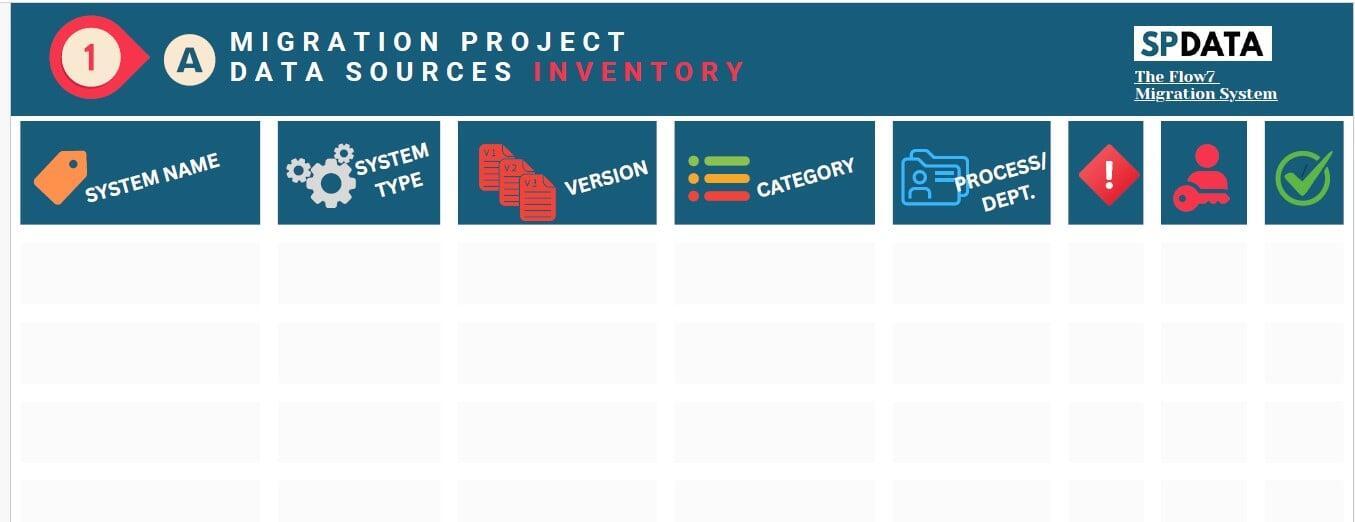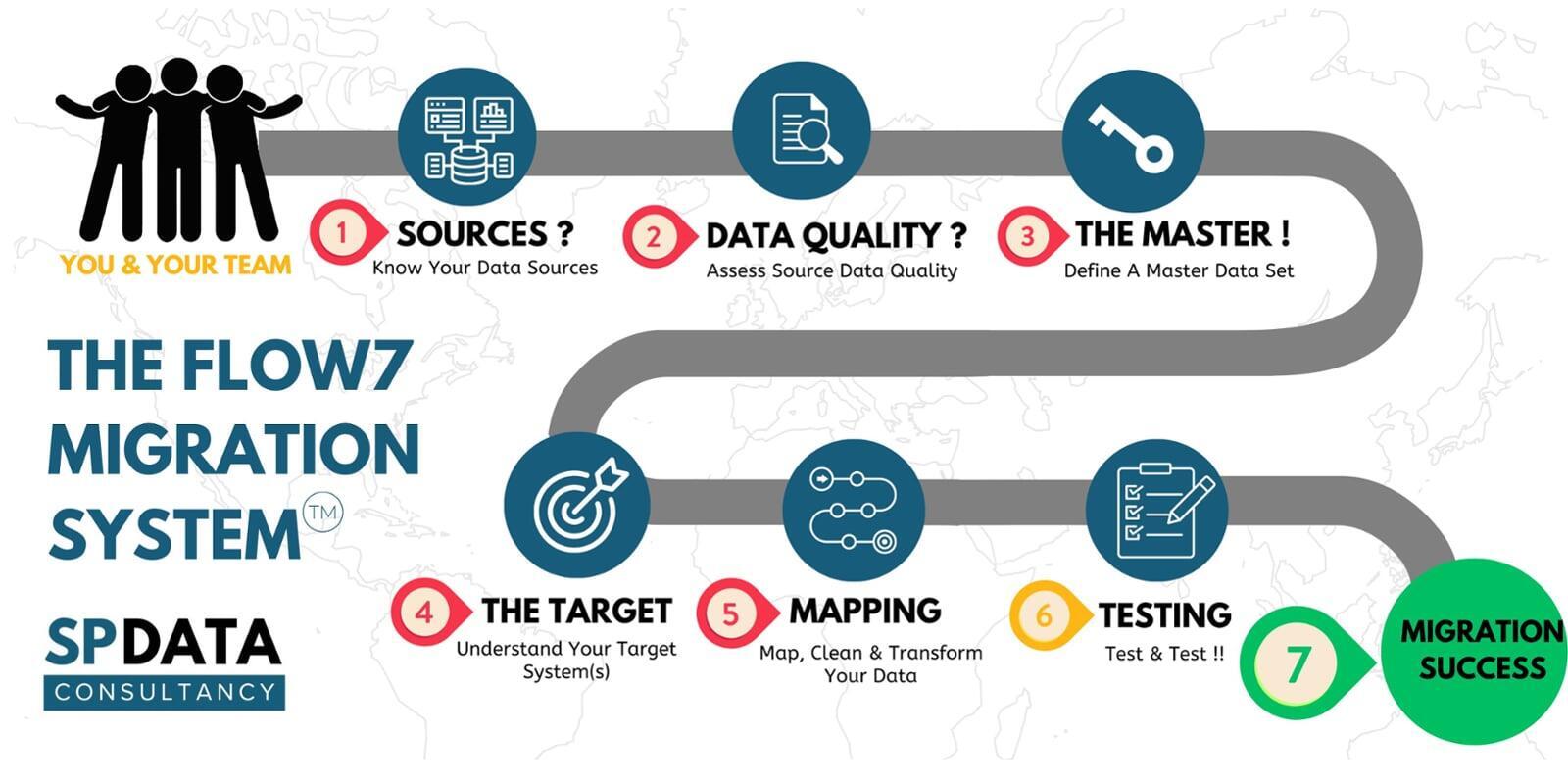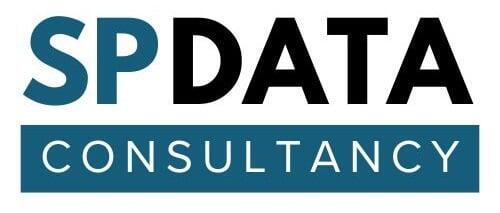Why It's Important to Understand Your Data Sources in a Data Migration
You're finally ready to upgrade that ancient system that's been holding your business back. The new software looks brilliant. The demos went well. Everyone's excited about the possibilities.
But here's what nobody tells you: "64% of data migrations overrun their forecast budget, with 54% overrunning on time," according to Forbes research [1]. McKinsey studies echo this challenge, finding that "75% of cloud migrations ran over budget, while 37% ran behind schedule" [2].
I've seen this pattern repeatedly myself. A small business owner calls me months into what should've been a straightforward project. They're stressed, over budget, and their team is losing faith fast.
"We thought we knew our data," they always say. "It seemed so straightforward. Can you help with our data?"
That's the thing, though. It never is if not planned and assessed and the team is on board.
The Costly Mistake Pattern I See Repeatedly
Here's a scenario that plays out more often than you'd think. Imagine a 45-person manufacturing business planning a system upgrade. Budget approved. New software chosen. Timeline set.
Two weeks in, the project grinds to a halt.
Why? They've discovered a critical inventory tracking system nobody mentioned in the planning meetings. An old Access database the warehouse team had been using for years to track special orders.
The "simple" migration becomes a nightmare. E.g. What started as an £8,000 budget project balloons to £20,000 plus with extra resources required.
But here's the thing: it was completely avoidable.
This is exactly why I use and developed the Flow 7 Migration System. And it all starts with Step 1: Know Your Data Sources.
Because you can't successfully migrate what you don't fully understand.

The Hidden Complexity Trap
Data migration looks simple on the surface. Move data from System A to System B. Job done.
But underneath that simplicity lies a web of complications that can derail even the best-planned projects.
The biggest trap? Assuming you know all your data sources.
Example Scenario: The Medical Practice That Nearly Lost Patient Data
Imagine a small medical practice upgrading their patient management system. Initially, they think they only had one data source: their main practice software.
Digging deeper reveals:
- A separate appointment booking system
- Excel spreadsheets with specialist patient notes
- A standalone billing system
- Scanned documents in a different file system
- Historical records in an old database nobody used anymore
What looked like a simple one-to-one migration became a five-source juggling act. The complexity doesnt just double—it multiplies exponentially.
Why Every Extra Data Source Multiplies Your Risk
Here's something most people don't realise: migration complexity doesn't increase linearly. It's exponential.
Each additional source brings:
- Different extraction methods
- Unique data formats
- Separate quality issues
- Individual technical challenges
This is why Step 1 of the Flow 7 system focuses entirely on tracking down every single data source before you start getting into moving the actual data.
Three Critical Questions You Must Answer
Question 1: How Many Data Sources Do We Actually Have?
This sounds obvious, but it's where most projects go wrong.
You need to dig beyond the obvious systems. Create a simple inventory that includes:
- Main business systems (obviously)
- Departmental spreadsheets
- Legacy systems you rarely use
- Personal data stores on individual computers
- Paper records that might need digitising
- Backup files with historical data
Pro tip: Don't just ask management. Your receptionist might maintain customer notes in a separate system. Your sales team might have lead data in spreadsheets nobody else knows about.
Question 2: What Types of Systems Are We Dealing With?
Not all databases or data sources are created equal. Each system type needs a different approach:
- Traditional databases (SQL Server, MySQL) usually have decent export tools but might have complex relationships hiding in the background.
- Cloud applications often limit how much data you can extract at once. Some have proper APIs, others make you jump through hoops.
- Accounting systems like QuickBooks or Sage often need special connectors. You can't just export everything as a CSV and hope for the best.
- Spreadsheets are the wild west of data. Hidden formulas, manual corrections, inconsistent formats—they're migration nightmares waiting to happen.
Question 3: What Exactly Are We Working With?
Generic descriptions don't cut it. "Our CRM system" or "the accounting database" aren't specific enough.You need exact names and versions. Here's why:
Hypothetical scenario: A business tells me they're using "Microsoft Dynamics." Sounds straightforward, right?
Turns out they're running a heavily customised version of Dynamics NAV 2013. That's a completely different beast from current versions. Standard migration tools won't work. Custom scripts needed. Timeline extended.
If this was discovered mid-migration instead of during planning, it would be a potential disaster.
The Human Side of Data Migration - It's CRUCIAL!
Technical understanding is IMPORTANT, but there's another layer most people miss: the human element. This is crucial.
Who Really Knows Your Data?
The person who manages the databases or software might not understand what all the fields mean and what your business processes involve. You need the people who use it every day.
Case Study: Quite a few years ago on a large NetSuite Data migration for a retail seed company I was involved with, I had many days onsite, this was before remote work was the norm, and it taught me how valuable the Team were from all areas and be able to identify them. Their day to day knowledge can highlight so, so much and I can't elaborate enough that having access to these people as a key resource can save hours in a project. Id like to list and thank them...but for data privacy I cannot, but if they are reading this (doubtful) you know who you are!
For each data source, identify:
- Who uses it daily and who knows about the processes
- Who understands the quirks and workarounds
- What unofficial systems exist to fill gaps
The Reality of Data Quality
Every business has messy (or missing data). The trick is knowing about it upfront rather than discovering it mid-migration. This is Step 2 of the framework.
Your Step-by-Step Investigation Plan
Here's the simple approach I recommend. It takes about half a day but can save you significant problems down the line:
Step 1: Hold a Data Discovery Workshop Get your key team members together for two hours. List every system anyone uses to record or access business data. Don't assume management knows everything—frontline staff often create their own solutions.
Step 2: Document What You Find Create a simple spreadsheet with:
- System names and exact versions
- What data each contains
- Who uses it most
- How you currently get data out
Step 3: Identify Your Data Experts Note who understands each system's quirks and nuances. These people are gold during migration.
Step 4: Sample Your Data Quality Look at 10-20 random records in each system. Spot potential issues while they're still easy to fix.
Step 5: Map the Connections Sketch how data flows between systems. Understanding these relationships prevents nasty surprises.
Step 6: Test Data Extraction Try exporting data from each system. See what you get and what might be missing.
The Cost of Getting It Wrong
Small businesses often rush this investigation phase. They're eager to show progress by jumping straight into migration.
When you miss a data source mid-migration, you face:
- Reworking completed migration code
- Extended timelines and increased costs
- Team morale problems
- Potential business disruptions
The ROI of Doing It Right
Proper source investigation might seem like unnecessary delay, but in my experience, it can significantly reduce overall project time.
More importantly, it ensures your team finds reliable, complete data in the new system—data that supports your business instead of creating new problems.
Why the Flow 7 System Works For Me
I apply the Flow 7 Migration System to data migration work I undertake. Understanding my client data sources first for any data movement - be it ; migrations, reporting, automations or AI data flow.
It's Step 1 for a reason.
You can't plan a successful migration without knowing:
- How many sources you're dealing with
- What types of systems they are
- The specific technical details of each
The businesses that succeed with migrations are the ones that invest time upfront in understanding what they're working with rather than just assume.
Your Next Step
If you're planning a data migration, don't make the same mistake that leads 64% of projects to go over budget. Don't assume you know your data.
Start with a proper investigation. Map every source. Understand what you're working with.
It's not the exciting part of migration, but it's the part that determines whether your project gets off on the right footing or joins the failure statistics.
Ready to get started? Check out Step 1 of the Flow 7 Migration System for an easy to follow data migration project approach.
Because the difference between migration success and costly failure often comes down to what you discover in the first few days—not the last few weeks - when its too late.
References
[1] McDowell, S. (2021). "Overcoming the Challenges of Data Migration." Forbes. Retrieved from https://www.forbes.com/sites/moorinsights/2021/03/15/overcoming-the-challenges-of-data-migration/
[2] Balakrishnan, T., Gnanasambandam, C., Santos, L., & Srivathsan, B. (2021). "Cloud-migration opportunity: Business value grows, but missteps abound." McKinsey. Retrieved from https://www.mckinsey.com/industries/technology-media-and-telecommunications/our-insights/cloud-migration-opportunity-business-value-grows-but-missteps-abound



